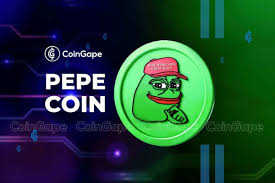The Rise of Pepe: A Cultural Icon of the Internet

Introduction
Pepe the Frog has evolved from a simple cartoon character to a significant figure in internet culture. Originating from Matt Furie’s comic series “Boys Club,” Pepe gained popularity as a meme across various platforms, encapsulating a wide range of emotions. This transformation reflects broader societal trends and the power of digital communication.
The Evolution of Pepe
Initially, Pepe was just one of the four characters in Furie’s comic, representing a laid-back and perpetually relaxed persona. Over the years, internet users adopted and adapted Pepe for countless memes, representing everything from joy to sadness and even irony. The versatility of Pepe’s expressions allowed users to share their feelings in a relatable way, contributing to his viral status.
Controversy and Symbolism
However, Pepe’s journey has not been without controversy. In the mid-2010s, certain versions of the meme were appropriated by extremist groups, leading to significant debate over his symbolism. The Anti-Defamation League classified some depictions of Pepe as hate symbols, which sparked outrage among the original fans who felt that the character’s true meaning was being corrupted. This conflict illustrates how digital symbols can be co-opted and how context matters in representation.
The Return to Roots
After a period of negative connotations, Matt Furie worked to reclaim Pepe’s identity. He launched campaigns and social media movements to promote positive imagery of Pepe, including the slogan “Save Pepe.” This initiative reflects the ongoing struggle over cultural ownership and the power dynamics at play in meme culture.
Current Status and Future Outlook
As of 2023, Pepe continues to be a popular meme, with a renewed focus on his original personality and positive representations. The character serves as a reminder of the duality of internet culture; while it can be a platform for creativity and expression, it can also be a stage for discord and misunderstanding. With the rapid evolution of digital platforms, the future of Pepe remains uncertain yet significant for ongoing discussions surrounding image, identity, and belonging within online spaces.
Conclusion
The journey of Pepe the Frog is more than just a story about a meme; it highlights the fluid nature of cultural icons in the digital age. As conversations about ownership, representation, and intent continue, Pepe’s presence serves as a case study for how internet culture shapes and is shaped by its users. Readers will benefit from understanding this cultural phenomenon, as it reflects broader societal values and the implications of digital communication.









